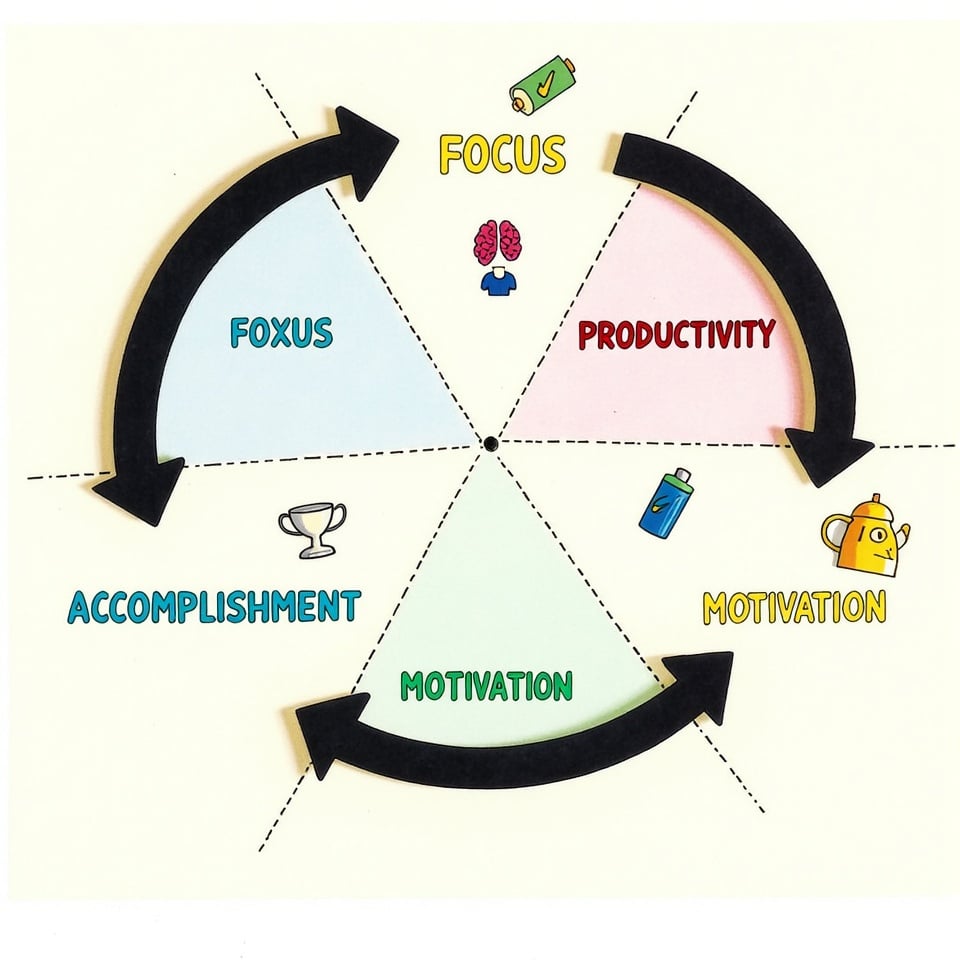Want to write a critical essay that your professor will actually want to read?
Today I’m going to show you exactly how to write a critical essay that gets results (step-by-step).
In fact, these are the same techniques I used to score an A+ on my literature analysis of “The Great Gatsby” – and I’ll share every detail with you.
Let’s dive in.
What’s a Critical Essay? (Let Me Break It Down)
Ever watched a movie and had strong opinions about it? That’s exactly what a critical essay is like – but with a bit more structure.
Think of yourself as a friendly detective looking at something really closely. Maybe it’s:
- A book you’re reading in class
- A movie that everyone’s talking about
- An idea that’s making waves in society
Here’s the cool part: You get to be both a detective AND a judge. But don’t worry – it’s not as scary as it sounds!
What Makes It “Critical”?
It’s not about being negative (I made that mistake when I first started!). Instead, you’re:
- Looking at both good and bad points
- Backing up your opinions with solid evidence
- Digging deeper than just “I liked it” or “I didn’t like it”
An Example:
Let’s say you’re writing about “The Hunger Games.” Instead of just saying “it’s a great book,” you might explore:
- How it reflects real-world issues
- What the author is trying to tell us about society
- Why certain characters make the choices they do
The Secret Sauce 🌟
Your job is to be like that friend who makes everyone think differently about something they thought they understood. You’re not just describing what you see – you’re helping others see it in a whole new way!
Remember: Everyone’s got opinions, but in a critical essay, you’re backing those opinions up with evidence. Pretty cool, right?
What Makes a Great Critical Essay? (The Secret Ingredients! 🔍)
Let’s break down what makes a critical essay really shine. I’ll share what I’ve learned from writing dozens of these (including some painful mistakes along the way!).
Your Big Idea (The Heart of Your Essay)
Think of this as your “main message.” It’s like picking a side in a friendly debate. Your big idea should:
- Be crystal clear (no fuzzy thinking allowed!)
- Make people think “Hmm, that’s interesting…”
- Stay focused (don’t try to solve all the world’s problems!)
Backing Up Your Points (Show Me the Evidence! 📚)
Remember when your mom asked, “Why should I believe you?” Same idea here! You’ll need:
- Direct quotes (if you’re writing about a book or article)
- Real facts and figures
- Expert opinions (people who know their stuff)
Pro Tip: Don’t just drop evidence and run! Tell your reader why it matters.
Wrapping It All Up (The Grand Finale 🎯)
Your ending should:
- Remind readers of your main point (but say it in a fresh way)
- Connect all your main ideas
- Leave readers thinking “Wow, that was worth reading!”
The Special Sauce (What Sets Great Essays Apart)
- Keep it fair and balanced (like a good news reporter)
- Break down complicated stuff into bite-sized pieces
- Show how your topic fits into the bigger picture
- Build your argument like you’re building a Lego tower – piece by piece
Quick Story: When I first started writing critical essays, I thought I had to use big words and complicated sentences. Big mistake! The best essays are clear, honest, and straight to the point – just like talking to a friend who’s really interested in your ideas.
Remember: Your goal isn’t to show off how smart you are. It’s to help your reader understand something in a new way. Cool, right?
Need help getting started? Try this: Imagine explaining your ideas to a curious friend over coffee. That’s the tone we’re going for!
Steps to write a critical essay
Think of yourself as a detective approaching a fascinating case. When you first dive into your reading material, don’t just skim the surface. Really dig in there! I remember when I first analyzed “The Great Gatsby” – I thought I knew the story until I started asking deeper questions about every scene.
Take detailed notes as you read, jotting down your initial reactions and questions. What makes you raise an eyebrow? What patterns do you notice? Pay special attention to those moments that make you think, “Wait, that’s interesting!” These reactions often lead to your best insights.
Critical Reading
The real magic happens when you start reading between the lines. Look for the author’s hidden messages and underlying themes.
Ask yourself: What’s the author really trying to say? Why did they choose these specific words or examples?
Here’s a pro tip I learned the hard way: Keep a reading journal nearby. Note down quotes that grab your attention, along with your thoughts about why they matter. This will be gold when you start writing your essay later.
Organize Your Thoughts
Remember that feeling when your room is super messy, and then you clean it up? That’s what we’re doing with your ideas now. Start by spreading out all your notes and observations.
Look for patterns and connections – they’re usually hiding in plain sight!
I like to use what I call the “idea mapping” technique. Write your main topic in the center of a page, then branch out with related ideas. You’ll be amazed at how quickly patterns start emerging.
State Your Thesis
This is where you plant your flag and say, “Here’s what I believe!” Your thesis needs to be clear, specific, and debatable. Instead of saying “Shakespeare is a great writer,” try something like “Shakespeare’s use of supernatural elements in Macbeth reveals deep insights about human guilt and ambition.”
Write a Critical Essay Outline
Think of your outline as a roadmap for your essay journey. Here’s a simple but effective structure:
Introduction:
- Hook your reader with something interesting
- Provide necessary background
- Present your thesis
Body Paragraphs:
- Topic sentence (your paragraph’s main point)
- Supporting evidence
- Your analysis
- Connection to thesis
Conclusion:
- Recap main points
- Reinforce thesis
- Leave readers with something to think about
Write Your Draft
Now comes the fun part – actually writing! Don’t worry about making it perfect right away. Your first draft is like a first date – it might be a bit awkward, but it’s a necessary step toward something better.
Start with your introduction. Make it engaging – I once began an essay about social media with a story about how my grandmother discovered Instagram. Personal touches like this can make your writing more relatable.
Proofread & Edit
This is where good essays become great ones. Read your work out loud – trust me, you’ll catch so many things you missed when reading silently.
Look for:
- Clear flow of ideas
- Strong evidence supporting each point
- Grammar and spelling
- Consistent tone
Expert Tips for Writing a Knockout Critical Essay
Let me share some game-changing tips that’ll help you write an essay that stands out.
Craft a Thesis That Packs a Punch
Think of your thesis as your essay’s heart – it needs to be strong and keep everything else pumping! Instead of writing “Social media is bad for society,” try something like “TikTok’s algorithm-driven content creates dangerous echo chambers that significantly impact young users’ political views.” See how the second version gives you more to work with?
Personal tip: Write your thesis on a sticky note and keep it visible while you write. It helps you stay focused!
Become a Text Detective
You know how detectives in movies always notice tiny details that crack the case? That’s you now! When reading your source material, look for:
- Repeated words or themes
- Surprising contradictions
- Hidden meanings
- Changes in tone or style
I once found an entire essay argument just by noticing how an author used weather descriptions to mirror characters’ emotions.
These little details matter!
Make Your Evidence Count
Don’t just drop quotes into your essay like random puzzle pieces. Each piece of evidence should work hard for you. Here’s my favorite formula:
Evidence + Explanation = Impact
For example: “When Romeo says ‘But soft, what light through yonder window breaks,’ (Evidence) he’s not just describing the sunrise – he’s showing how Juliet literally brightens his world (Explanation), revealing the transformative power of love in the play (Impact).”
Keep Your Cool (While Making Strong Points)
Imagine you’re a judge in a courtroom – you want to be fair but firm. Even if you’re passionate about your topic, keep your tone balanced. Instead of writing “This is obviously wrong!” try “This approach raises several significant concerns…”
Build Your Essay Like a Skyscraper
Each floor (paragraph) needs a solid foundation and clear connection to the next. Start each paragraph with a clear topic sentence that connects to your main argument.
Here’s a quick structure I love:
- Topic sentence (your mini-argument)
- Evidence (your proof)
- Analysis (your interpretation)
- Connection (link back to thesis)
Go Beyond “Book Report” Mode
Nobody needs you to explain that “The sky is blue.” Dig deeper! Ask yourself:
- Why does this matter?
- What’s really going on here?
- How does this connect to bigger ideas?
Extra Tips for Success:
- Read your essay out loud – your ears catch what your eyes miss
- Start body paragraphs with your strongest points
- End paragraphs with thoughtful insights, not just facts
- Keep asking “So what?” after each point you make
Critical essay structure
A well-structured critical essay typically follows a standard format that helps organize your thoughts and arguments effectively.
Here’s an overview of the key components:
Introduction
Start with an attention-grabbing hook – maybe a striking fact or thought-provoking question. Provide brief background information that your reader needs to know. End with a clear thesis statement that presents your main argument. Keep it focused and engaging!
Body Paragraphs
Each paragraph should tackle one main idea that supports your thesis. Structure them like this:
- Begin with a strong topic sentence
- Present your evidence or examples
- Analyze the evidence thoroughly
- Connect back to your thesis
- Use smooth transitions between paragraphs
Remember: Each paragraph builds your argument step by step. Make sure every sentence serves a purpose.
Addressing Counterarguments
Show you’ve considered other viewpoints. This strengthens your argument and demonstrates critical thinking. Explain why your interpretation is more convincing, but stay respectful of opposing views.
Conclusion
Wrap up by bringing your main points together. Don’t just repeat what you’ve said – show how your arguments support your thesis. End with a thought that leaves your reader thinking about the broader implications of your analysis.
Tip: Think of your essay as a conversation with your reader. Guide them through your thinking process clearly and logically.
Topics for writing a critical essay
Sample topics for writing a critical essay:
- The Impact of Social Media on Modern Communication
- Climate Change Denial: A Critical Analysis
- Gender Representation in Contemporary Cinema
- The Ethics of Artificial Intelligence in Healthcare
- The Role of Protest in Democratic Societies
- Fast Fashion and Its Environmental Consequences
- The Influence of Video Games on Youth Culture
- Fake News and Its Effect on Public Opinion
- The Portrayal of Mental Health in Literature
- The Pros and Cons of Genetic Engineering
Critical essay examples
Here is an example critical essay.
Title: The Portrayal of Gender Roles in Shakespeare’s “Macbeth”
Introduction:
William Shakespeare’s tragedy “Macbeth” has long been celebrated for its exploration of ambition and morality. However, a closer examination reveals a complex portrayal of gender roles that both reflects and challenges the societal norms of Elizabethan England. This essay argues that Shakespeare uses the characters of Macbeth and Lady Macbeth to subvert traditional gender expectations, ultimately highlighting the destructive nature of rigid gender roles.
Body Paragraph 1:
At the outset of the play, Lady Macbeth embodies traditionally masculine traits, displaying ambition, ruthlessness, and a willingness to challenge the natural order. She famously implores the spirits to “unsex” her, wishing to strip away her feminine qualities to achieve her goals. This portrayal challenges the Elizabethan notion of women as passive and subservient, instead presenting a female character who drives the plot forward through her own agency and ambition.
Body Paragraph 2:
Conversely, Macbeth initially exhibits traits associated with femininity in Elizabethan society, such as indecisiveness and emotional vulnerability. His reluctance to act on his ambitions and his reliance on his wife’s guidance subvert the expected behavior of a male warrior. Shakespeare thus presents a male protagonist who doesn’t conform to the period’s ideals of masculinity, challenging the audience’s expectations.
Body Paragraph 3:
As the play progresses, both characters undergo transformations that further complicate gender expectations. Lady Macbeth’s eventual descent into madness and guilt can be interpreted as a reassertion of her “feminine” nature, suggesting that her rejection of traditional gender roles leads to her downfall. Meanwhile, Macbeth grows increasingly ruthless and violent, embracing a hyper-masculine persona that ultimately leads to his destruction.
Counterargument:
Some critics argue that the play ultimately reinforces traditional gender roles by punishing characters who transgress them. However, this interpretation overlooks the nuanced way in which Shakespeare presents these characters’ downfalls. Their tragic ends stem not from their rejection of gender norms per se, but from the moral corruption that accompanies their pursuit of power.
Conclusion:
Through his portrayal of Macbeth and Lady Macbeth, Shakespeare offers a critique of rigid gender roles in Elizabethan society. By presenting characters who both embody and subvert gender expectations, he illustrates the destructive potential of adhering too strictly to societal norms. This nuanced exploration of gender continues to resonate with modern audiences, highlighting the timeless nature of Shakespeare’s insights into human behavior and social constructs.
Final thoughts
Now It’s Your Turn
Let me wrap this up with some key takeaways about critical essay writing:
Key Points:
- Start with thorough critical reading
- Develop a strong, specific thesis
- Back up claims with solid evidence
- Structure your essay logically
- Edit ruthlessly for clarity
Pro Tip: The best critical essays combine sharp analysis with clear, engaging writing.
What To Do Next
- Choose your essay topic
- Create a detailed outline
- Write your first draft
- Review and revise thoroughly
- Get feedback from others
Bonus Tip: Keep a swipe file of well-written critical essays. Study how great writers structure their arguments.
Bottom Line: Critical essay writing isn’t just about analyzing texts – it’s about developing your voice as a thinker and writer. Start practicing these techniques today, and you’ll see improvement in your very next essay.







